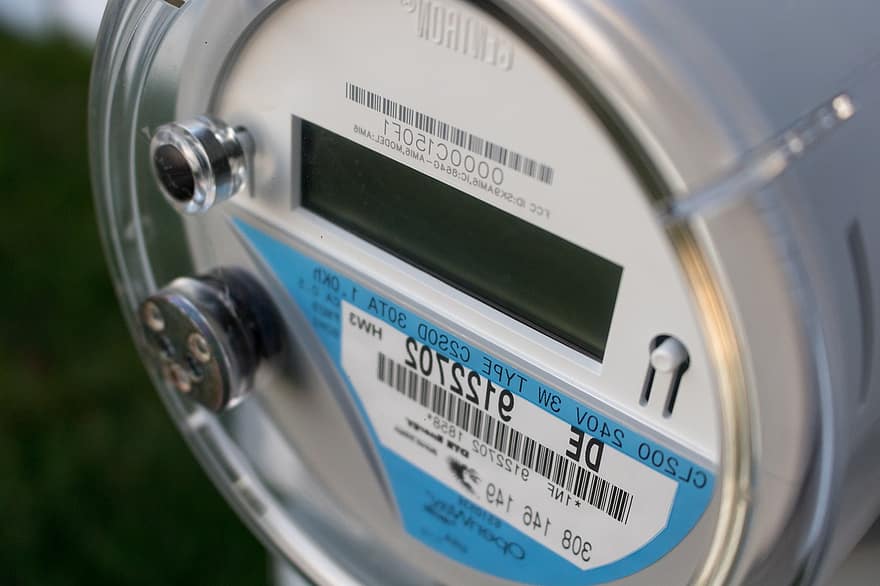In response to the COVID-19 pandemic, many states have mandated that utilities maintain service regardless of customers’ ability to pay. [1] The Illinois Commerce Commission (“ICC,” the quasi-judicial agency that regulates Illinois’s utilities), for example, issued an order requiring various customer protections, including a moratorium on utility shutoffs due to nonpayment, more generous deferred payment arrangements, and more favorable credit reporting for missed payments. [2]
Category: In the News Page 4 of 5
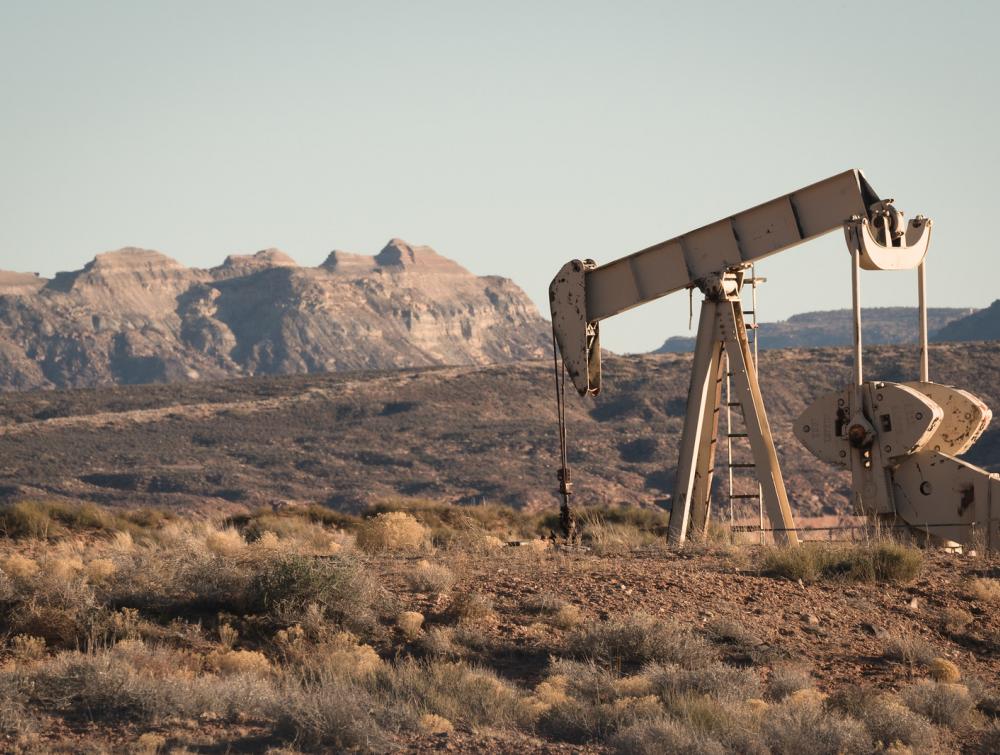
Judge Voids Oil and Gas Leases on Almost One Million Acres of Land
The Western Watersheds Project and the Center of Biological Diversity brought suit against the United States Bureau of Land Management for the unlawful restriction of public participation in oil and gas leases that affect large areas of public land across the Western United States.[1] On February 27, 2020, a federal district judge ruled in favor of the plaintiffs and voided the oil and gas leases on federal lands for unlawful restriction of public participation.[2]
“More than [one] billion barrels of oil were produced from drilling offshore and on public land” under the Trump administration in 2019.[3] The oil and gas leases span across sixty-seven million acres of land across eleven states.[4] While the Trump administration expanded domestic energy production, it implemented measures to curve public participation.[5] “A centerpiece of this effort has been the administration’s efforts to silence the public and local communities,” said Chase Huntley, director of the Wilderness Society’s climate and energy program. Chief Magistrate Judge Ronald E. Bush ruled in favor of the Western Watersheds Project and the Center of Biological Diversity.[6] Judge Bush rejected the oil and gas leases and mandated that the Bureau of Land Management alter its procedure for oil and gas leases “that are wholly or partially within sage grouse habitat management areas.”[7]
Environmental groups see this ruling as a victory. Taylor McKinnon, senior campaigner at the Center for Biological Diversity said in a statement, “The judge confirmed that it’s illegal to silence the public to expand fossil fuel extraction. It’s a win for millions of acres of our beautiful public lands and a major blow to the Trump administration’s corrupt efforts to serve corporate polluters.”[8]
The Bureau of Land Management maintains that it “[has] been working within [its] legal authorities to alleviate or eliminate unnecessary and burdensome regulations, while at the same time upholding public health and environmental protections . . .” and remains “committed to a simpler, more effective leasing process,” according to Derrick Henry, spokesman for the Bureau of Land Management.[9]
*Featured Image: Mason Cummings, The Wilderness Society
[1] Juliet Eilperin and Darryl Fears, Judge voids nearly 1 million acres of oil and gas leases, saying Trump policy undercut public input, The Washington Post (February 28, 2020), https://www.washingtonpost.com/climate-environment/2020/02/27/judge-voids-nearly-1-million-acres-oil-gas-leases-saying-trump-policy-undercut-public-input/ (last visited February 29, 2020).
[2] Id.
[3] Id.
[4] Id.
[5] Id.
[6] Rachel Frazin, Judge voids oil and gas leases on almost 1 million acres of public lands, The Hill (February 28, 2020), https://thehill.com/policy/energy-environment/485133-judge-voids-almost-1-million-acres-of-oil-and-gas-leases-on-public (last visited February 29, 2020).
[7] Id.
[8] Id.
[9] Id.
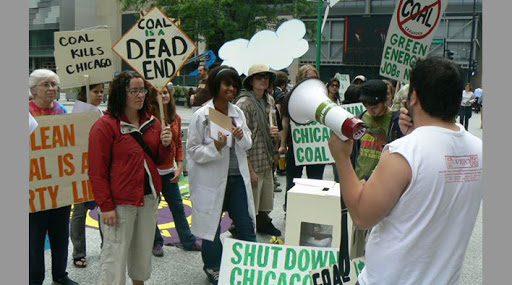
Chicago’s Little Village Residents Renew Call for Environmental Revitalization Plan
Residents of Chicago’s Little Village neighborhood are renewing calls for a neighborhood revitalization plan that addresses their environmental concerns. Little Village, located on Chicago’s southwest side, is the former site of a coal plant that closed in 2012.[1] Following the closure of the plant, the Little Village Environmental Justice Organization (LVEJO) spearheaded an effort to transition the site into recreational, open space, and economic development assets that serve the needs of the community.[2] Those efforts culminated in a set of draft guidelines released by the City’s Department of Planning and Development (DPD) in January 2019.[3]
The guidelines framed an effort to improve economic and environmental conditions in the area, including a plan to integrate on-site renewable energy, increased landscaping, and encourage the use of alternative fuel vehicles for industrial operations in the neighborhood.[4] However, residents felt the plan did not go far enough to address their environmental concerns, and prioritized continued industry development in the neighborhood.[5] Progress on the environmental revitalization efforts stalled soon after the draft guidelines were released.[6]
The owner of the former coal plant site, Hilco Redevelopment Partners, intends to turn the site into a one‑million‑square‑foot warehouse.[7] LVEJO members hosted a press conference at City Hall on February 26, 2020 to voice their opposition to the plan. LVEJO, joined by representatives from the Natural Resources Defense Council (NRDC), the Alliance of Nurses for Healthy Environments, Warehouse Workers for Justice, and the Union of Concerned Scientists called on the DPD to resume efforts to modernize the neighborhood by increasing environmental regulations on current and future industrial operators in the area, continuously monitoring air pollution levels, and performing a traffic study every five years.[8] Following the press conference, LVEJO expressed their hope that Hilco and DPD will engage Little Village residents in crafting environmentally equitable solutions that benefit the community as a whole.[9]
*Featured Image: LVEJO
[1] Little Village Environmental Justice Organization, Coal Power Plant Shutdown, http://www.lvejo.org/our-accomplishments/coal-plant-shutdown/ (last visited Feb. 29, 2020).
[2] Id.
[3] City of Chicago Department of Planning and Development, Mayor Emanuel’s Industrial Corridor Modernization Little Village Framework, Draft for Public Comment (January 2019), https://www.chicago.gov/content/dam/city/depts/zlup/Planning_and_Policy/Publications/draft-little-village-framework.pdf.
[4] Id., p. 2.
[5] Mauricio Peña, Environmental Groups Call On City To Regulate Polluters By Relaunching Little Village Modernization Plan, Block Club Chicago (Feb. 27, 2020), available at https://blockclubchicago.org/2020/02/27/environmental-groups-call-on-city-to-regulate-polluters-by-relaunching-little-village-industrial-corridor-modernization-plan/.
[6] Kari Lyderson, Chicagoans demand answers, input and oversight for former coal plant site, Energy News Network (Feb. 27, 2020), available at https://energynews.us/2020/02/27/midwest/chicagoans-demand-answers-input-and-oversight-for-former-coal-plant-site/.
[7] Id.
[8] Id.
[9] Peña, supra note 5.
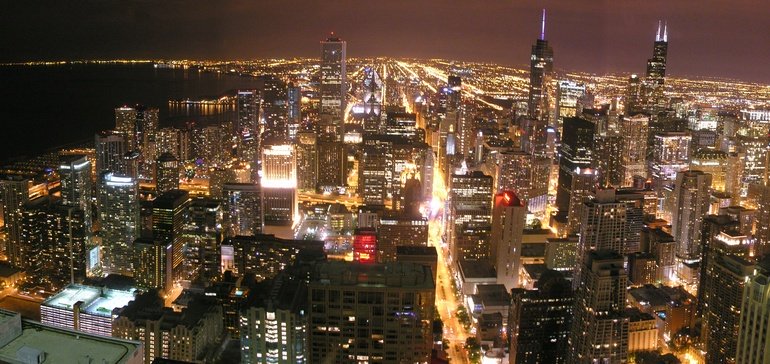
Chicago Considers Forming its Own Electric Utility Company
Chicago is considering ending its 30-year franchise agreement with Commonwealth Edison Company (ComEd), the City’s incumbent utility provider. The City is exploring the possibility of forming an electric utility company that would be owned, operated, and managed by the City.[1] This process, known as municipalization, allows a local government to purchase the infrastructure and distribution assets of an incumbent utility provider in order to operate and maintain the system.
Illinois law includes a provision that permits local governments to exercise the right to acquire, construct, own, and operate a public utility.[2] Presently, 32 municipalities in Illinois, including Naperville and Winnetka, operate their own municipal electric utility.[3] However, the prospect of Chicago parting ways with ComEd is significant given that over 3 million of ComEd’s 4 million customers reside in Chicago.[4] For this reason, it is likely that acquiring ComEd’s infrastructure would be expensive—ComEd believes that the value of their system could be as much as $10 billion.[5]
Chicago is the latest in a series of large cities considering municipalization. Following Pacific Gas & Electric Company’s (PG&E) Chapter 11 Bankruptcy filing and the devastating wildfires in their service territory, San Francisco offered PG&E $2.5 billion to acquire the company’s electric infrastructure.[6] Boulder, Colorado is making progress towards its municipalization goals, but the process was caught up in a years-long litigation battle with the region’s incumbent utility provider, Xcel Energy, which raised a number of legal questions like the legality of Boulder’s plan, the cost of financing a new system, and the acquisition or condemnation of Xcel’s distribution assets.[7]
Against a backdrop of a federal corruption probe into ComEd’s lobbying efforts and a growing demand for cleaner sources of energy as well as more equitably priced utility bills, the idea of a municipal utility provider is gaining more traction.[8] Though, this is not the first time that City leaders considered the idea of municipalization. In July 2019, First Ward Alderman Daniel La Spata, with the support of 21 additional cosponsors, introduced a measure to perform a feasibility study investigating the cost of acquiring ComEd’s assets and the costs of running a municipal utility.[9] The measure did not pass at the council meeting, but at a subsequent meeting in October 2019, Twelfth Ward Alderman George Cardenas confirmed that the feasibility study was underway and anticipated the results being released in the coming months.[10]
*Feature Image: Wikimedia
[1] Becky Veavea, What if the City of Chicago Ran its Own Electric Utility?, NPR (Feb. 10, 2020), available at https://www.npr.org/local/309/2020/02/10/804480819/what-if-the-city-of-chicago-ran-its-own-electric-utility.
[2] 65 ILCS 5/11-117-1 (2019).
[3] Illinois Municipal Electric Agency, Members of IMEA, http://www.imea.org/Members.aspx (last visited Feb. 16, 2019).
[4] Veavea, supra note 1.
[5] Veavea, supra note 1.
[6] Sonja Hutson, San Francisco Offers to Buy PG&E Electric Grid in the City for $2.5 Billion, KQED (Sept. 8, 2019), available at https://www.kqed.org/news/11773007/san-francisco-offers-to-buy-pge-electric-grid-in-the-city-for-2-5-billion.
[7] Robert Walton, Colorado authorizes transfer of Xcel assets to Boulder, boosting city’s municipalization efforts, Utility Dive (Oct. 11, 2019), available at https://www.utilitydive.com/news/colorado-authorizes-transfer-of-xcel-assets-to-boulder-boosting-citys-mun/564843/.
[8] Veavea, supra note 1.
[9] Press Release, Democratize ComEd, Democratize ComEd Campaign Calls for Public Feasibility Study (Nov. 15, 2019), available at https://demcomed.org/assets/press_releases/DemComEd_11_15_19_Press_Release.pdf.
[10] Id.
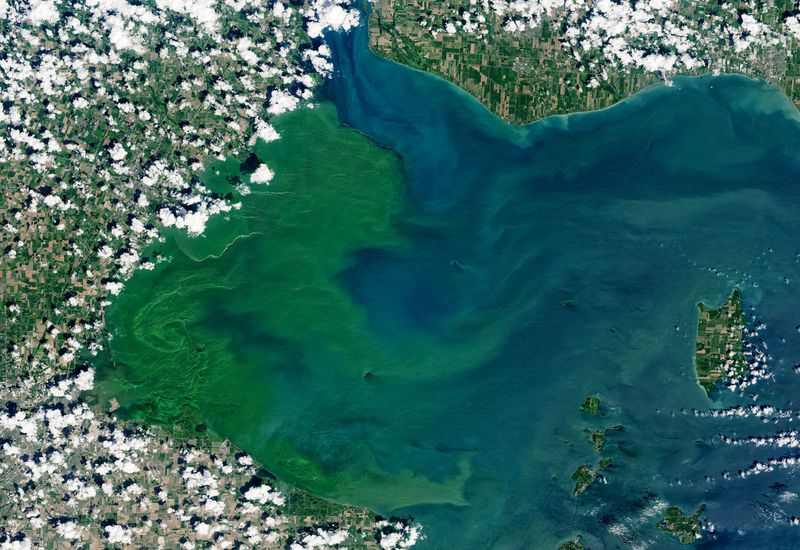
On November 19, 2019, the U.S. Environmental Protection Agency (“EPA”) awarded five grants totaling nearly $3.6 million to organizations dedicated to clean-up and restoration activities across Lake Erie.[1] The grants were awarded to the Ohio EPA, Ohio Lake Erie Commission (“OLEC”), Ohio Department of Natural Resources, and the Northeast Ohio Four County Regional Planning and Development Organization, and are part of a broader mission by the EPA to restore and protect the Great Lakes region.[2]
The grants follow a July 2019 algae bloom outbreak that was among the most severe and toxic since scientists began tracking algae blooms in the early 2000’s.[3] The bloom covered nearly 620 square miles over the surface of Lake Erie, an area more than twice the size of Chicago.[4] Greater rainfall in recent years has increased erosion and flooding along Lake Erie’s coast line, which allows farm fertilizers and waste water to infiltrate the lake while higher temperatures cause the blooms to expand further and last longer.[5]
Certain programs that received funding through the EPA’s grants will tackle the threat of algae blooms head on. These programs include a plan by the Ohio EPA and OLEC to reduce phosphorus runoff and to protect and restore streams and wetlands by working with farmers as well as a grant to develop and implement the Lakewide Action Management Plans for Lake Erie and Remedial Action Plans for Lake Erie areas of concern.[6]
*Featured Image: The 2019 toxic algae bloom that formed in western Lake Erie. In a NASA satellite image taken on July 30, 2019, the green medley of plankton and bacteria had grown larger than New York City. (USGS/NASA Landsat).
[1] Press Release: EPA announces grants to advance clean-ups in Ohio’s Lake Erie Watershed and Areas of Concern, USEPA (Nov. 19, 2019) https://www.epa.gov/newsreleases/epa-announces-grants-advance-clean-ups-ohios-lake-erie-watershed-and-areas-concern (last visited Nov. 22, 2019).
[2] Id.
[3] Tony Briscoe, The shallowest Great Lake provides drinking water for more people than any other. Algae blooms are making it toxic — and it’s getting worse, Chicago Tribune (Nov. 14, 2019) https://www.chicagotribune.com/news/environment/great-lakes/ct-lake-erie-climate-change-algae-blooms-20191114-bjkteorf5vg2hfu3cgqxe2ncru-story.html (last visited Nov. 22, 2019).
[4] Id.
[5] Algae Bloom in Lake Erie Poses Major Health Threat, NOAA (Aug. 15, 2019) https://www.nesdis.noaa.gov/content/algae-bloom-lake-erie-poses-major-health-threat (last visited Nov. 22, 2019).
[6] Laura Johnston, U.S. EPA announces $3.6 million in Lake Erie grants, Cleveland.com (Nov. 19, 2019) https://www.cleveland.com/news/2019/11/us-epa-announces-3-million-in-lake-erie-grants.html (last visited Nov. 22, 2019).
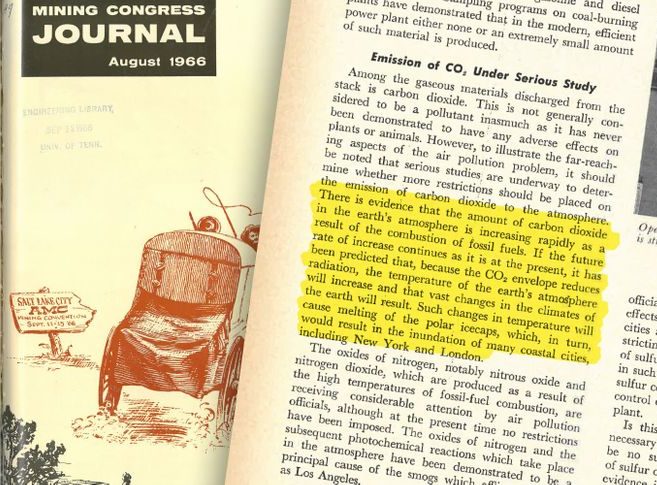
Evidence of what fossil fuel companies knew about the potentially negative impact of fossil fuel combustion on climate change is critical to the legal strategy of those seeking damages for carbon dioxide emissions. If the harmful effects of fossil fuel emissions were known to fossil fuel companies, they potentially could be held liable for damages.[1]
For decades coal companies have denied knowledge of the consequences, as well as the existence of climate change itself. The Huffington Post reported that although Peabody Energy,[2] the largest private-sector coal company in the world, acknowledges climate change on its website, “[i]t has been directly and indirectly involved in obfuscating climate science for decades. It funded dozens of trade, lobbying and front groups that peddled climate misinformation.”[3]
A recently discovered article, however, revealed that the coal industry has known of fossil fuel’s impact on climate change for decades.[4]
Chris Cherry, professor of civil engineering at the University of Tennessee, discovered an article published in the Mining Congress Journal in 1966, written by James R. Garvey, president of Coal Research Inc.[5] An article titled “ramifications of extractive technologies,”[6] revealed the coal industries foreknowledge. Garvey wrote:
There is evidence that the amount of carbon dioxide in the earth’s atmosphere is increasing rapidly as a result of the combustion of fossil fuels . . . [s]uch changes in temperature will cause melting of the polar icecaps, which, in turn, would result in the inundation of many coastal cities, including New York and London. [7]
Most modern knowledge of climate change is seen in the article including increase of average air temperature, melting of polar ice caps, and rising of sea levels.[8] Cherry’s discovery could potentially open the coal industry to similar litigation currently faced by the oil industry.[9]
The Huffington Post reached out to Peabody Energy for comment on the Article’s revelations. A Peabody spokesman stated:
Peabody recognizes that climate change is occurring and that human activity, including the use of fossil fuels, contributes to greenhouse gas emissions. We also recognize that coal is essential to affordable, reliable energy and will continue to play a significant role in the global energy mix for the foreseeable future. Peabody views technology as vital to advancing global climate change solutions, and the company supports advanced coal technologies to drive continuous improvement toward the ultimate goal of near-zero emissions from coal.[10]
*Featured Image: A 1966 issue of the Mining Congress Journal, Courtesy of Chris Cherry
[1] See Elan Young, Coal Knew, Too, Huffington Post (Nov. 22, 2019) https://www.huffpost.com/entry/coal-industry-climate-change_n_5dd6bbebe4b0e29d7280984f (last visited Nov. 22, 2019).
[2] https://www.peabodyenergy.com/.
[3] Élan Young, supra n.1; see Suzanne Goldenberg and Helena Bengtsson, Biggest US coal company funded dozens of groups questioning climate change, Guardian (June 13, 2016), https://www.theguardian.com/environment/2016/jun/13/peabody-energy-coal-mining-climate-change-denial-funding (last visited Nov. 22, 2019).
[4] Eoin Higgins, Coal Knew Too: Explosive Report Shows Industry Was Aware of Climate Threat as Far Back as 1966, Common Dreams (Nov. 22, 2019), https://www.commondreams.org/news/2019/11/22/coal-knew-too-explosive-report-shows-industry-was-aware-climate-threat-far-back-1966 (last visited Nov. 22, 2019).
[5] Id.
[6] Id.
[7] Élan Young, supra n.1
[8] Eoin Higgins, supra n.4.
[9] Id.
[10] Élan Young, supra n.1
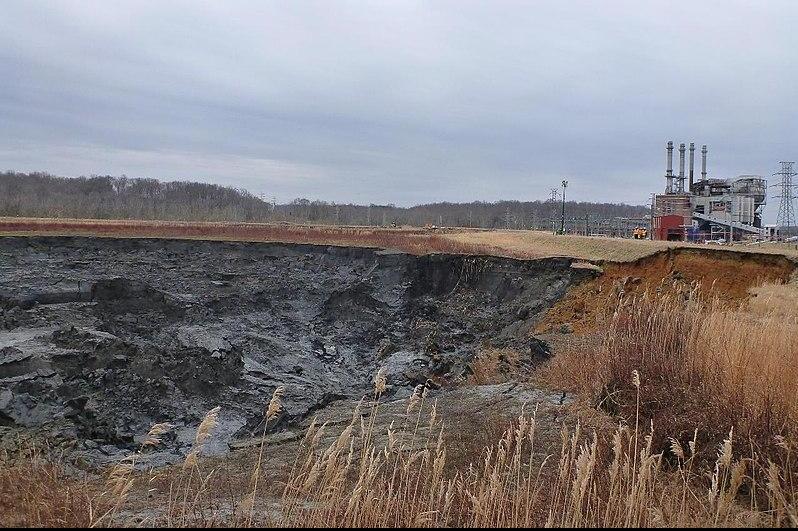
Illinois EPA Solicits Public Input for Coal Ash Rulemaking
The Illinois Environmental Protection Agency (“IEPA”) recently concluded a series of stakeholder meetings, which sought public input on the development of rules related to the mitigation and remediation of coal ash ponds.[1] Coal combustion residual surface impoundments, commonly known as “coal ash ponds,” are repositories for the potentially harmful byproducts of coal-powered electric generation facilities.[2]
A 2018 report compiled by EarthJustice, Prairie Rivers Network, Environmental Integrity Project, and the Sierra Club found that 22 out of 24 coal ash ponds in Illinois release toxic pollutants (including arsenic, cobalt, and lithium) into the groundwater.[3] In the wake of these findings, Illinois governor JB Pritzker signed the Coal Ash Pollution Prevention Act (the “Act”) into law in July 2019.[4] The Act prohibits the discharge of coal ash into the environment and establishes a regulatory framework designed to ensure industry compliance.[5] The Act provides guidelines for the construction, operation, and closure of all Illinois coal ash plants currently in operation. The guidelines also set forth the requirements for monitoring contamination levels and any future on-site remediation.
The IEPA hosted its final stakeholder meeting on October 9, 2019 in Waukegan, Illinois. The next step for the Agency is to consolidate the feedback, and draft a rule for public comment. The IEPA anticipates publishing the draft rule in November or December 2019. A final version of the rule must be submitted for approval to the Illinois Pollution Control Board by March 30, 2020.[8]
[1] Alex Ortiz, Illinois EPA to host meeting on coal ash pollution in Joliet, The Herald-News (Oct. 5, 2019), available at https://www.theherald-news.com/2019/10/03/illinois-epa-to-host-meeting-on-coal-ash-pollution-in-joliet/aoppp1p/.
[2] Coal Combustion Residual Surface Impoundments, Illinois Environmental Protection Agency, https://www2.illinois.gov/epa/topics/water-quality/watershed-management/ccr-surface-impoundments/Pages/default.aspx (last visited Oct. 25, 2019).
[3] Earthjustice, Prairie Rivers Network, Environmental Integrity Project & Sierra Club, Cap and Run: Toxic Coal Ash Left Behind by Big Polluters Threatens Illinois Water (Nov. 27, 2018), available at https://earthjustice.org/news/press/2018/new-report-reveals-severe-groundwater-contamination-at-illinois-coal-ash-dumps.
[4] Alex Ruppenthal, Illinois Becomes Latest State to Crack Down on Coal Ash Pollution (July 31, 2019), available at https://news.wttw.com/2019/07/31/illinois-becomes-latest-state-crack-down-coal-ash-pollution.
[5] See 415 ILCS 5/22.59 (2019).
[6] See 40 C.F.R. § 257, Subpart D (2019).
[7] Coal Combustion Residual Surface Impoundments, Illinois Environmental Protection Agency, https://www2.illinois.gov/epa/topics/water-quality/watershed-management/ccr-surface-impoundments/Pages/default.aspx (last visited Oct. 25, 2019).
[8] Id.
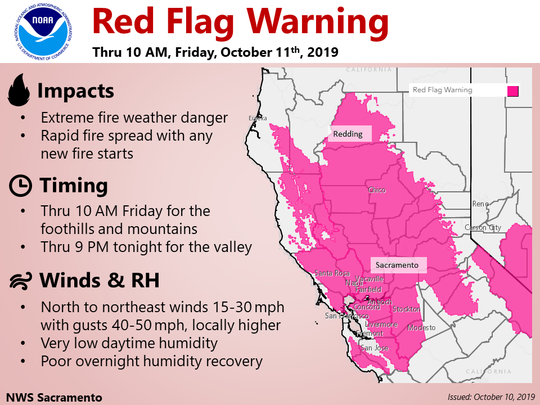
Threat of Wildfire Prompts California Utility Companies to Cut Power to Customers
On Wednesday, October 9, Pacific Gas & Electric Company (PG&E) began shutting off power to nearly 800,000 customers in northern California. PG&E stated that the outages were necessary to preempt the risk of wildfires brought on by severe weather conditions like high winds and hot, dry air throughout the company’s service area.[1] At the time PG&E initiated the outages, the company anticipated that some customers could be without power for days.[2]
Southern California Edison Company (SCE), the largest utility provider in south-central California, including Los Angeles County, announced on Thursday, October 10, that it would start cutting power to customers in light of the hazardous conditions caused by the Santa Ana winds.[3] The same day, wildfires broke out in SCE’s service area in Riverside County, east of Los Angeles.[4] SCE anticipates that over 200,00 customers may be affected by the power outages.[5]
These controlled blackouts, also known as “preemptive de-energizations,” are the foundation of PG&E and SCE’s Public Safety Power Shut-off programs (PSPS), which are part of a comprehensive effort to reduce the risk of electrical infrastructure sparking fires. This is accomplished by temporarily turning off power to specific areas.[6] Following the wildfires that devastated parts of California in 2017 and 2018, the California PUC ordered electric utility companies to submit Wildfire Mitigation Plans[7] and this past summer, California Governor Gavin Newsom signed a law that provides $21.5 billion in funding to help utilities pay for wildfire damage, and make upgrades to the electric infrastructure.[8] The California State Legislature, the California Public Utilities Commission (California PUC), and electric utility companies have, in turn, intensified their efforts to improve the safety of electric infrastructure as the threat of seasonal wildfires is exacerbated by changing climate. Dangerous weather conditions have started to subside, though line inspections may delay power returning to some PG&E customers for up to five days[9] and the fires in Riverside County continue to burn.[10]
Featured Image: National Weather Service Sacramento
[1] See Press Release, PG&E Begins to Proactively Turn Off Power for Safety to Nearly 800,000 Customers Across Northern and Central California, Pacific Gas & Electric Company (Oct. 9, 2019), https://www.pge.com/en/about/newsroom/newsdetails/index.page?title=20191009_pge_begins_to_proactively_turn_off_power_for_safety_to_nearly_800000_customers_across_northern_and_central_california (last visited Oct. 9, 2019).
[2] Id.
[3] See Press Release, , Santa Ana Winds Prompt SCE Public Safety Power Shutoffs in Some Southland Areas, Southern California Edison Company (Oct. 10, 2019), https://energized.edison.com/stories/santa-ana-winds-prompt-sce-public-safety-power-shutoffs-in-some-southland-areas.
[4] See Joseph Serna, Hannah Fry, & Alejandra Reyes-Velarde, Numerous Riverside County homes destroyed by fire; SoCal Edison cuts power to thousands, The Los Angeles Times (Oct. 10, 2019), https://www.latimes.com/california/story/2019-10-10/l-a-faces-critical-fire-danger-possible-power-outages-as-santa-ana-winds-buffet-southern-california (last visited Oct. 10, 2019).
[5] See Public Safety Power Shutoffs, Current Status, Southern California Edison Co (effective Oct. 11, 2019), https://www.scemaintenance.com/content/sce-maintenance/en/psps.html (last visited Oct. 11, 2019).
[6] See Rulemaking 18-12-005, Decision Adopting De-Energization (Public Safety Power Shutoff) Guidelines (Phase I Guidelines), California PUC, p. 3 (issued May 30, 2019).
[7] See Rulemaking 18-10-007, Order Instituting Rulemaking to Implement Electric Utility Wildfire Mitigation Plans Pursuant to Senate Bill 901 (2018), California PUC (issued Oct. 25, 2018).
[8] See Alejandro Lazo & Katherine Blunt, California Legislature Approves Multibillion-Dollar Wildfire Fund, The Wall Street Journal (July 11, 2019), https://www.wsj.com/articles/california-legislature-approves-multibillion-dollar-wildfire-fund-11562870591 (last visited Oct. 11, 2019).
[9] See Thomas Fuller, Californians Confront a Blackout Induced to Prevent Blazes, The New York Times (Oct. 10, 2019), https://www.nytimes.com/2019/10/10/us/pge-outage.html (last visited Oct. 11, 2019).
[10] Incident Overview, California Department of Fire & Forestry Protection, https://www.fire.ca.gov/incidents/ (last visited Oct. 11, 2019).

Iceberg More Than Twice the Size of Chicago Breaks Off Antarctica
On September 26, 2019, an iceberg measuring 632 square miles, weighing 315 billion tons, calved from an ice shelf in east Antarctica.[1] Calving is the sudden release of ice from the edge of a glacier, iceberg, or ice shelf. This event is the first major calving on the Amery ice shelf in over 50 years.[2]
Scientists do not attribute this large break of ice to climate change—despite it being the largest event in decades. Helen Amanda Fricker, a professor at the Scripps Institution of Oceanography, states, “It’s part of the ice shelf’s normal cycle, where we see major calving events every 60-70 years.”[3]
While this event is not believed to be a direct result of climate change, calving in other areas is beginning to increase in depth and speed. Sue Cook from the Institute of Marine and Antarctic Studies expects iceberg calving incidents to increase in coming years due to climate change.[4] Cook explains, “There are a number of different processes that’ll happen . . . [a]s waters around Antarctica warm up, they’ll start thinning the ice shelves and making them more vulnerable to breaking up.”[5]
Featured Image: COPERNICUS DATA/SENTINEL-1/@STEFLHERMITTE, https://www.bbc.com/news/science-environment-49885450.
[1] See Lisa Cox, Giant iceberg breaks off east Antarctica, The Guardian (Sept. 30, 2019), https://www.theguardian.com/world/2019/oct/01/giant-iceberg-breaks-off-east-antarctica (last visited Oct. 10, 2019); Jonathan Amos, 315 billion-tonne iceberg breaks off Antarctica, BBC News (Sept. 30, 2019), https://www.bbc.com/news/science-environment-49885450 (last visited Oct. 11, 2019).
[2] Id.
[3] Id.
[4] See Carly Cassella, A Giant Iceberg Just Broke Off Antarctica in an Unexpected Location, Science Alert (Oct, 2, 2019), https://www.sciencealert.com/a-giant-iceberg-has-just-broken-off-antarctica-and-it-s-bigger-than-expected (last visited Oct. 10, 2019).
[5] Id.

“The Climate Emergency is a Race We are Losing, But It is a Race We Can Win.” [1]
Monday Morning, UN Secretary-General António Guterres set the stage for the summit by declaring that “This is not a climate talk summit. We have had enough talk. This is not a climate negotiation summit. You don’t negotiate with nature. This is a climate action summit.” Government, business, and civil society leaders from over 200 countries are meeting today to deliver “new pathways and practical actions to shift global response into higher gear.”[2]
The topics that the summit is covering, include: (1) Increased Ambition and Accelerated Action in meeting Paris commitments (2) Climate Finance (3) Unlocking the Potential of Nature in Climate Action (4) Live, Work, and Move Green (5) Assistance for the Least Developed Countries (6) Small Island Developing Sites (7) Cutting GHG Emissions Now with Cooling and Energy Efficiency (8) A Resilient Future, Making People Safer (9) People Centered Action, and (10) Moving Economy from Grey to Green.[3]
While the Summit leaders encourage active participation from all the attending nations, some of the largest national economies—Australia, Japan, South Korea, Brazil, and the U.S.—will not be given an opportunity to participate in the discussions because of their continuing support for the expansion of coal plants in their nations.[4] Guterres said that by denying some nations from participating the Summit sends a message that “governments are either part of the problem or part of the solution.”[5]
A full list of the announcements and commitments made at the Climate Action Summit can be found at www.un.org/climatechange.
*Featured Image: https://www.un.org/sustainabledevelopment/climate-action/
[1] UN Climate Action Summit Team, UN Climate Action Summit 2019 Main Press Release (Sept. 23, 2019), https://www.un.org/en/climatechange/assets/pdf/CAS_main_release.pdf (statement of UN Secretary General António Guterres).
[2] Id.
[3] Id.
[4] Jessica F. Green, The U.N. Climate Summit starts today. Here’s what it can—and can’t—achieve (Sept. 23, 2019), https://www.washingtonpost.com/politics/2019/09/23/un-climate-summit-starts-today-heres-what-it-can-cant-achieve/.
[5] Id.

